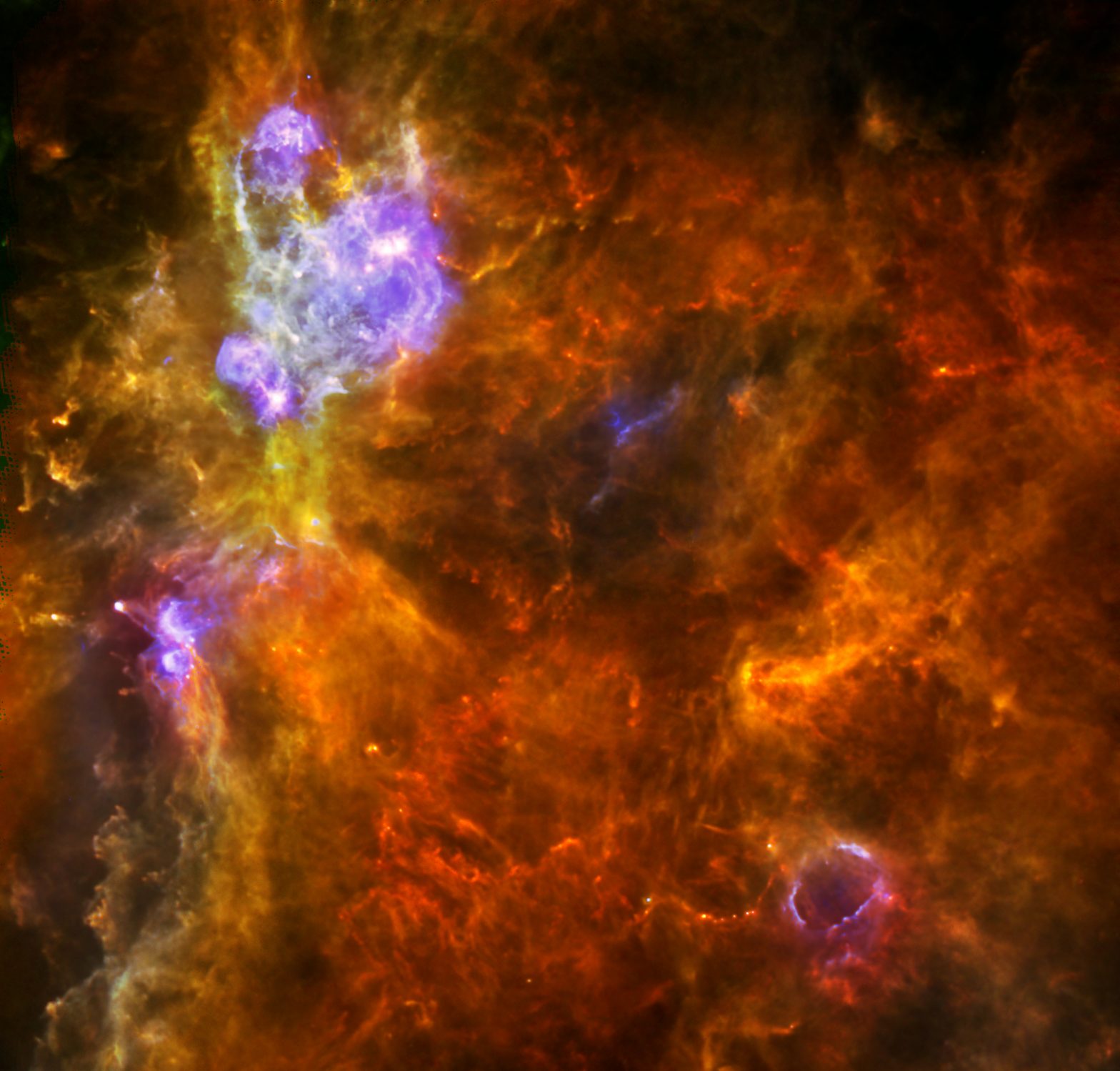| Basic Information | |
| What is this? | The star-forming region “W3” |
| Where is it in the sky? | In the constellation of Cassiopeia |
| How big is it? | The region shown here is around 200 light years across |
| How far away is it? | Around 6200 light years away |
| What do the colours represent? | The red and orange regions are cooler, while the blue, purple and white regions are being heated by newly-formed stars |
Downloads
See this object in:

One of the current big problems in astrophysics is explaining how high mass stars form. By looking at star-forming regions in great detail with Herschel, astronomers are starting to piece together a picture. The region shown above is known as “W3”, and is a Giant Molecular Cloud which lies around 6200 light years away in one of the spiral arms of our Galaxy.
The main region of interest is on the left of the image above, where newly-formed, massive stars are heating the dust and gas around them. In this image, warmer material appears blue and white, while cooler material appears red. In the full frame image, shown right, numerous nearby structures are seen, including pillars and filaments of cold gas and dust, just a few tens of degrees above absolute zero. There is also a scattering or small, yellow dots, which are cool, dense clumps of dust. Most of these lie along the filaments or in the pillars, and represent the earliest stages of star formation.
The massive stars seen in these regions are astronomical enigmas, as they are so hot and bright that their intense light should have blown away the material around them before they grew so large. The key to the puzzles seems to be related to the fact that most stars form in groups, or clusters. The study of the W3 region has shown that the material is indeed blown around by the massive stars, but that it is trapped within the clusters. Rather than escaping into the surrounding regions, this gas and dust can then be accreted onto the new-born stars in the cluster, allowing them to reach masses which would otherwise be impossible.

